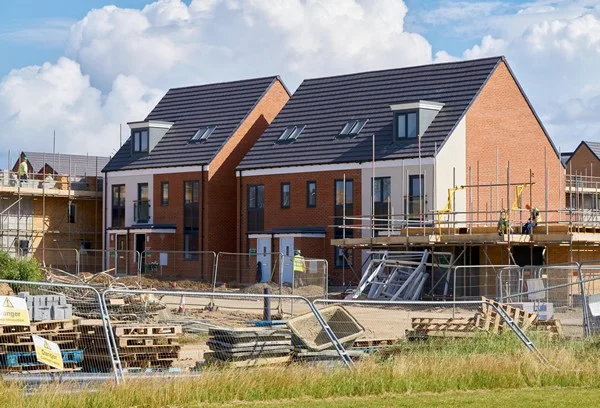Is it Possible to Cover Your University Costs as a Landlord?
It may appear a bizarre concept on the surface, but student BTL mortgages do exist, the idea being that with a ‘student mortgage’ you purchase a property with no down payment and earn money by renting it out to your friends.
Only because it is technically possible does not necessarily make it an appropriate pathway for most students; covering living costs is a real concern for most university attendees, but purchasing a property to rent out is not without its complexities.
An interesting proposition
Several small lenders have put together a range of innovative products aimed exclusively at students. Examples of this include Bath, Loughborough, and Vernon building societies, all of which provide students with the opportunity to buy a home with no deposit required.
Those taking advantage of the products will subsequently be able to rent space in their properties to other students in order to cover the mortgage payments.
‘Mortgages and students are not usually two things that you’d associate as a package,’ commented L&C Mortgages associate director, David Hollingworth.
‘Students are unlikely to have much if any income and therefore will always struggle to meet the primary requirement of a mortgage lender in demonstrating affordability to take on a mortgage,’
‘They also aren’t likely to have a deposit to use a buy-to-let mortgage, let alone the minimum income or homeownership that many lenders would expect,’
‘These issues have seen some lenders offer students a chance to buy a property rather than rent, but with the help of their parents.’
How the scheme works
Eligible applicants are offered a loan to purchase a property with an LTV of 100%, meaning no deposit is required. A guarantor is required to co-sign the mortgage agreement along with the student, typically a family member.
The funds can subsequently be used to purchase a property and rent out spare rooms to friends or other students. From there, monthly payments are collected to both cover the mortgage repayments and make money to cover the owner’s living costs.
‘’The mortgage amount is based on the rental income the property could yield from letting out the spare rooms.
‘The guarantor will be on the mortgage deeds but not on the property deeds, and their income can be used to help the application,’ explains Chris Sykes, associate director and mortgage consultant at Private Finance.
‘If no deposit is available, then the guarantor can either put money on account with the lender to the value of 20 per cent of the mortgage or they can use their own home as security for the loan.’
An attractive initiative, but must be carefully considered from a longer-term perspective. The ongoing costs of homeownership are at an all-time high in the UK, as are those of running a BTL business of any kind.
Anyone interested in becoming a student landlord is therefore advised to seek independent broker support in order to establish their suitability and determine whether it is something they can realistically afford.
Stamp Duty Changes Result in Major Decline in Mortgage Approvals
The partial withdrawal of the stamp duty holiday did little to quell the appetites of those still looking to make the best of the remaining incentive; for those who act fast, there is still the opportunity to make considerable savings by sidestepping stamp duty liability on property purchases that fall below the £250,000 threshold.
Prior to the end of June, the threshold had been held at a much higher £500,000 for several months.
The housing market maintained much of its momentum throughout July and August, in spite of predictions of a major slowdown. However, new figures from the Bank of England suggest that mortgage approvals have taken a tumble throughout July.
A total of 75,200 mortgages were approved in July, compared to the 80,300 approved in June; this indicates performance better than the same period last year but significantly below pre-pandemic norms.
Signs of a return to normality
House builders and estate agents experienced unprecedented demand throughout most of the pandemic. Movers and first-time buyers alike were forced to rethink their priorities during lockdown, which, combined with the temporary stamp duty holiday, triggered frenzied competition for desirable homes.
As the countdown to the full withdrawal of the stamp duty incentive continues, experts are now expecting to see gradual signs of a return to normality.
“We’re likely to see more volatility in sales over the coming months as the tax break tapers further, but all-in-all, this marks the beginning of a return to more normal housing market conditions,” commented Hina Bhudia, partner at Knight Frank Finance.
Others believe that the next couple of months could at least see the housing market’s momentum continue, if not step up somewhat while the opportunity remains.
“We may see another increase in activity in the next couple of months as buyers line up transactions before the stamp duty threshold returns to its normal level of £125,000 from October,” said Martin Beck, senior economic advisor to the EY ITEM Club.
“But once the stamp duty holiday has ended, the EY ITEM Club expects demand to soften and that there will be a modest correction in prices.”
A strong future in uncertain times
Despite the fact that the economic outlook for the UK, in general, is anything but certain, the housing market is expected to continue performing with strength indefinitely.
“We suspect that home purchase demand will remain robust even after the stamp duty holiday ends altogether in October,” said Andrew Wishart, property economist at consultancy Capital Economics.
“Web searches for the property portals Rightmove and Zoopla remain well above pre-virus levels.”
Mortgage Applications Still High Despite Stamp Duty Holiday Expiry
From the moment the temporary stamp duty holiday was announced, everyone expected a major post-holiday slowdown. It seemed inevitable that the moment an incentive was withdrawn, mortgage application volumes would take a nosedive.
What happened was nothing of the sort; according to the latest figures published by Money Supermarket, mortgage application volumes are still high and demand for desirable homes in popular parts of the UK has maintained its momentum.
“The stamp duty holiday proved very popular with many homebuyers,” said Jo Thornhill, mortgage expert at Money Supermarket.
“So it’s only natural that many feared its end could lead to a major dip in home-buying interest.”
Polled by Money Supermarket, just 51% of homebuyers said they credited the stamp duty holiday with keeping the housing market moving over the course of the past year; the rest said it had done little other than create a problematic housing bubble.
Commenting on the figures, Money Supermarket said that all indications suggest buyers are predominantly setting their sights on homes that fall below the current £250,000 stamp duty threshold. No stamp duty will be payable on such properties until the end of September, which goes some way to explain the average mortgage borrowing amount of £213,000 today.
Among those taking out mortgages, the two most popular products are currently two-year fixed rate deals and five-year fixed rate deals, Money Supermarket reports.
“Buyers who are able to complete their purchases before October can still make significant savings,” says Thornhill.
95% of LTV mortgages are making an impact
The figures also suggest that the re-introduction of the 95% LTV mortgage is having a positive impact on the sector, predominantly with first-time buyers. Since the beginning of the year, the number of 5% mortgage products available in the UK has increased from 13 to 177.
“This is a positive trend that is making it easier for younger buyers to get on the housing ladder,” Thornhill commented.
Others have criticised lenders offering 95% LTV products for the strictness of their criteria when determining eligible applicants. 5% mortgages hold huge appeal for first-time buyers, though they are restricted to those with an excellent credit score, proof of a high annual income, and evidence of a generally strong financial position.
Average property prices on the up
Taking a look at medium house prices in regions across the UK, Money Supermarket’s report suggested the highest average property prices were in London (£495,000) and the Southeast (£342,000).
The cheapest average property prices were found in Yorkshire and Humberside, the North West, and the North East, falling between £143,000 and £175,000.
As the average mortgage borrowing amount currently stands at £213,000, this suggests most property purchase activity is taking place within these latter regions of the country.
According to Yorkshire and Humberside, the North West, and the North East, almost half of all prospective buyers are worried that the UK is currently facing a housing bubble that could burst at any time. Furthermore, an additional 25% said they did not think the stamp duty holiday was fair, as the timing of the incentive led to a disproportionate number of prospective buyers missing out.
High Street Mortgage Rates Hit New Sub-1% Low as Competition Heats Up
The mortgage battle being fought by the UK’s biggest lenders is heating up, with advertised rates having dipped as low as 0.83% with some banks. There are now numerous deals being advertised with introductory rates of less than 0.9%, with HSBC having broken its own long-standing records with a product up for grabs at just 0.89%.
Elsewhere, Halifax has a market-leading two-year introductory deal available at 0.83%, coupled with a standard £999 arrangement fee.
All the ultra-affordable products available at these kinds of lows are open only to those able to offer a deposit of 40%. Decent offers are available for mortgages with lower down payment requirements, but they do not come close to rivalling these all-time High Street lows.
How low will mortgage rates fall?
Analysts have been debating for some time exactly how low mortgage rates could fall before the beginning of an inevitable return to norms. Experts are split evenly down the middle, with half suggesting they could easily go lower than 0.5% and the other half saying the deals available right now are as good as they are going to get.
Brokers are urging those who are fast approaching the end of their introductory rate mortgage deal to consider switching now before being automatically transitioned to a standard variable rate product. There is a chance for a vast audience of mortgage payers to save many thousands of pounds by taking advantage of the opportunity while it is available.
One of the reasons for these record-low mortgage rates is the fact that the Bank of England base rate is still sitting at 0.1%, where it is likely to remain for some time. The housing market in general has seen record activity over the past few months, with demand having consistently outstripped supply in all regions of the country.
This has prompted lenders to introduce increasingly generous incentives to potential applicants in order to give them a competitive edge over rival lenders.
Competitive deals with lower down payments
For applicants able to pull together a deposit of 25% to 30%, there are deals available that are edging close to the 1% mark. HSBC has a 75% LTV mortgage available with a 1.19% introductory interest rate and an arrangement fee of £999.
Mortgages with a deposit requirement of 15% are still competitive, typically hovering around the 1.8% mark with similar arrangement fees. For buyers looking to take out a 90% LTV loan, there is a significant shift in average rates from around 2.2% to 2.5% or more. Some deals for 10% mortgages are hovering around the 2.9% mark, though with additional incentives such as low arrangement fees and up to £500 cashback with some lenders.
Applicants are therefore advised to consider the total costs associated with taking out a mortgage rather than focusing exclusively on the initial low APR.
Mortgage Payers Advised to Switch to Save Thousands
Experts are advising homeowners approaching the end of their two-year fixed-rate periods to consider switching to a new deal rather than automatically transitioning to their lender’s SVR (standard variable rate).
According to Moneyfacts.co.uk, the average mortgage payer could save an average of 1.93% on their mortgage payments by taking action at the opportune moment.
Data suggests that while the average two-year fixed mortgage rate was 2.53% in July 2018, today’s average SVR is around 4.46%. Consequently, those who allow their loans to be automatically switched to the lender’s SVR can expect an average increase in their mortgage repayments of 1.93%.
This would mean that for a mortgage payer with an outstanding balance of £250,000 and 23 years left on their term, their monthly repayments would be £1,449.99 on an SVR mortgage of 4.46%.
Moneyfacts.co.uk reports that two-year fixed-rate loans are today being offered at an average of 2.05%, a full 2.41% less than today’s average SVR. This would therefore mean that if the same homeowner above switched to a 2.05% two-year fixed rate deal, they would face a much lower monthly repayment of £1,136.82.
This would subsequently save them £313.17 per month, amounting to a huge £3,758.04 saving over the course of a year.
A temporary window for significant savings
While there is still plenty of scope for homeowners to make huge savings by switching at the right time, market movement suggests the window may be closing. Two-year fixed rates are slowly but steadily rising, gradually eroding the savings that could be made by switching at the opportune moment.
“With the average SVR likely to remain more static moving forward and the mortgage market itself remaining fluid, as lenders continue to amend their ranges in reaction to an ever-evolving landscape, there is no guarantee that rates will not continue to increase,” commented Eleanor Williams, a finance expert at Moneyfacts.co.uk.
“However, as there remains an almost 2.50% difference between the average SVR and the average two-year fixed rate today, the benefits of switching speak for themselves, as being able to save significantly on monthly outgoings could be more important than ever in these uncertain times.”
“Those who wish to explore whether they are able to reduce their rate and consequently their monthly mortgage payment would do well to move swiftly.”
“As with any financial commitment, seeking advice from an independent, qualified adviser has never been more relevant, as understanding the true cost of any new deal, taking into account any fees and incentives, and indeed keeping up-to-date on the available products and criteria could be made significantly easier with assistance from a professional.”
New Campaign Seeks to Support Rejected Mortgage Applicants
Major high-street banks are being urged to offer more support to mortgage applicants whose applications are likely to be rejected. A new initiative called “Thanks for Nothing” has been launched by specialist mortgage platform with the aim of preventing rejected applicants from becoming trapped in ongoing rejection cycles.
Hayton voiced concern that major banks and lenders are not providing nearly the kind of support first-time buyers need to get on the property ladder in the UK. On up to 50% of the platforms, customers said that their mortgage applications had been declined by at least one other lender or broker.
This initiative could prove particularly useful for applicants with a poor credit history and the self-employed, who, despite being able to comfortably afford a mortgage in most cases, are often automatically declined.
“Self-employment and poor credit histories are on the rise in the UK, so a growing number of people applying for mortgages simply don’t fit the traditional financial mould,” said Paul Cos, co-founder of Hayton.
“Many are being rejected by traditional lenders and online mortgage brokers that can’t see past their situation, while others will be put off from applying at all.”
Rejected applicants are discouraged from reapplying
A survey conducted by the mortgage experts at Bluestone in 2019 found that almost half of all declined mortgage applicants are discouraged from reapplying with other lenders. The survey also found that comparatively few subsequently seek the input of independent brokers or advisers.
In the wake of three consecutive lockdowns, market watchers expect declined mortgage application volumes to continue growing for the indefinite future.
Speaking on behalf of Bluestone Mortgages, CEO Steve Seal commented on the extent to which the coronavirus crisis has intensified economic uncertainty for many households.
“Covid-19 has left people in financial difficulty, and as a result, many will emerge from the Covid-19 pandemic with more complex borrowing needs,” he said.
“We have already seen evidence of this, with our application volumes in January and February 2021 increasing by 90% compared to the same period in 2020.”
“We anticipate this trend to continue over the coming years as borrowers navigate the fallout of the pandemic and increasingly approach lenders who can support them with affordable financing.”
More applicants declined by major banks
Bluestone also reported that around 37% of mortgage brokers have found that most cases that involve referring clients to specialist lenders are attributed to application rejections from major high-street banks. This represents a major uptick from the 29% recorded last year.
It was determined that 68% of application refusals are based on poor credit, 28% on adverse credit, and 22% on regular income streams. 18% of application refusals resulted from CJJs, according to the data from Bluestone.
The 1% Mortgage is Back, but what does it Really Mean?
Competition among lenders on the High Street is fuelling an unprecedented and escalating price war; over the course of the last month, several lenders have once again introduced sub-1% two-year fixed mortgage deals for the first time in years.
Today there are at least 10 two-year fixed remortgage deals being advertised at rates of less than 1%, all of which are prompting many to ask the obvious question:
Are 1% mortgage rates for real, or is it all too good to be true?
Why lenders are offering sub-1% mortgage deals
The motivation for offering mortgages with interest rates lower than 1% is fairly straightforward. As things stand right now, lenders are finding themselves with little choice but to go to extremes to get new customers on their books.
Competition between lenders is fierce, meaning many are throwing out the kinds of deals they would never have considered in previous years.
“The sub-1% mortgages to surface have grabbed the spotlight as lenders drop their rates to bring in new business after the market endured an unsettled period due to the pandemic,” explains Rachel Springall, finance expert at Moneyfacts.co.uk.
“Genuinely, a deal with a low rate and high fee may only be suitable for someone with a substantial mortgage who can meet the eligibility criteria. If borrowers were to approach a mortgage broker and assess the deal based on true cost, they may well find they are better off elsewhere on a deal with a slightly higher rate but with a more reasonable fee and incentive package. It really does depend on their circumstances and what they are looking to borrow, so seeking advice is wise.”
“There is much more scope for lenders to cut pricing in the higher loan-to-value sectors, but we have only recently seen product choice grow in this area of the market, after a significant drop due to the pandemic.”
“With this in mind, it may be a few weeks before lenders consider slashing their rates on higher loan-to-value mortgages, and instead they may well just maintain their presence in the market or make minor tweaks for borrowers who have been waiting for deals to return.”
A competitive offer with caveats
The appeal of a sub-1% mortgage deal is undeniable, but it is unlikely that most prospective buyers will be able to qualify for such rates. With the vast majority of lenders offering sub-1% deals, including NatWest, Royal Bank of Scotland, TSB, and Platform, the maximum LTV available is just 60%.
In order to qualify, the applicant would subsequently need to provide a minimum deposit of 40% along with all other initial charges. The offer is therefore unlikely to appeal to most first-time buyers, for whom saving the minimum deposit requirement is often the biggest of all barriers to homeownership.
In the meantime, movers and first-time buyers looking to get the best possible deal are advised to consult with an independent broker rather than approaching any specific lender directly. Some of the most competitive deals on the market are available exclusively in the form of broker-introduced applications and are not available on the High Street.
Build-to-Let: A Brief Overview
In the UK the typical approach to generating long-term revenues from a rental property has been buy-to-let investments, this is where an individual or organisation invests in an existing property in order to let it out to prospective tenants as a landlord.
With affordable inventory becoming increasingly thin on the ground, alternative options are being explored by new and established investors alike. One of which is build-to-let investment opportunities, which call for an entirely different form of finance.
What Is Build-to-Let?
As the name suggests, build-to-let refers to a development project wherein residential dwellings are built with the goal of being let out to tenants. A specialist type of development finance product, build-to-let funding is available exclusively on projects that result in the creation of three or more residential units.
These units can be flats, houses and other types of residential dwellings, which may be created in the form of refurbishments, property conversions or new builds.
Where specialist build-to-let finance is available, it is typically offered in the form of three different types of products:
- Residential finance– available for the development of most types of residential dwellings, including flats, houses, student accommodation and Houses in Multiple Occupation (HMO).
- Commercial finance– offered for the development of business premises and office spaces, along with storage facilities, factories and general commercial units.
- Mixed-use finance– issued for projects involving the development of properties to be used for multiple purposes, such as a combined commercial and residential property.
Build-to-let finance is typically issued primarily on the basis of the property’s estimated value upon completion. As with all secured borrowing facilities, the lender has the right to repossess and sell the property to recoup their capital if the borrower is unable to repay the loan as agreed.
What Are the Potential Advantages of Build-to-Let Finance?
The main advantage of build-to-let finance is the way in which it is a fully made-for-purpose solution for these kinds of investments. All aspects of the loan are engineered with the requirements of build-to-let investors in mind.
Build-to-let finance is often available over a much longer term than many comparable short-term development finance products; this provides the investor with greater flexibility in regard to subsequently repaying the loan over a number of years.
In terms of LTV, a typical lender will provide build-to-let of anything from 60% to 75% of the property’s value, this therefore means an initial deposit requirement of around 25% is needed, which may be negotiable depending on the lender in question.
Build-to-let loan values can be exponentially higher than those of many comparable secured lending products; depending on the requirements of the project and the financial circumstances of the applicant, build-to-let loans are available from £1 million to £10 million or more.
Independent Broker Support
As there are comparatively few lenders in the UK who specialise in build-to-let finance, independent broker support is essential.
For more information on any of the above or to discuss your requirements in more detail, contact a member of the team at UK Property Finance today







